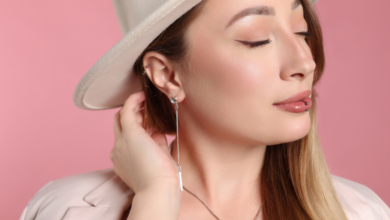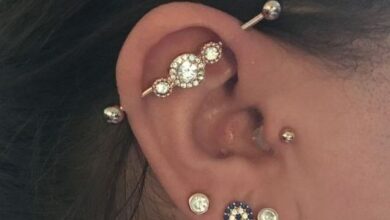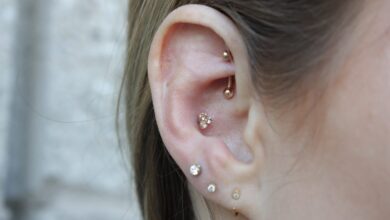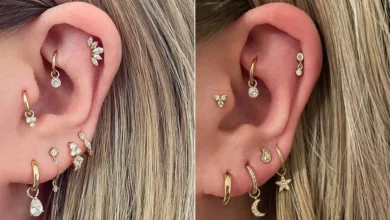
Dermal anchoring piercings are the latest trend in body modification, and they are taking the world by storm. These tiny gems, which are inserted under the skin to create a unique and eye-catching decoration, have a surprisingly big impact. From adding an edgy touch to your style to expressing your individuality, this innovative form of body art is a popular choice among those looking to stand out from the crowd. Let’s dive into the world of Dermal anchoring piercings and discover why they are making such a huge splash in the fashion world.
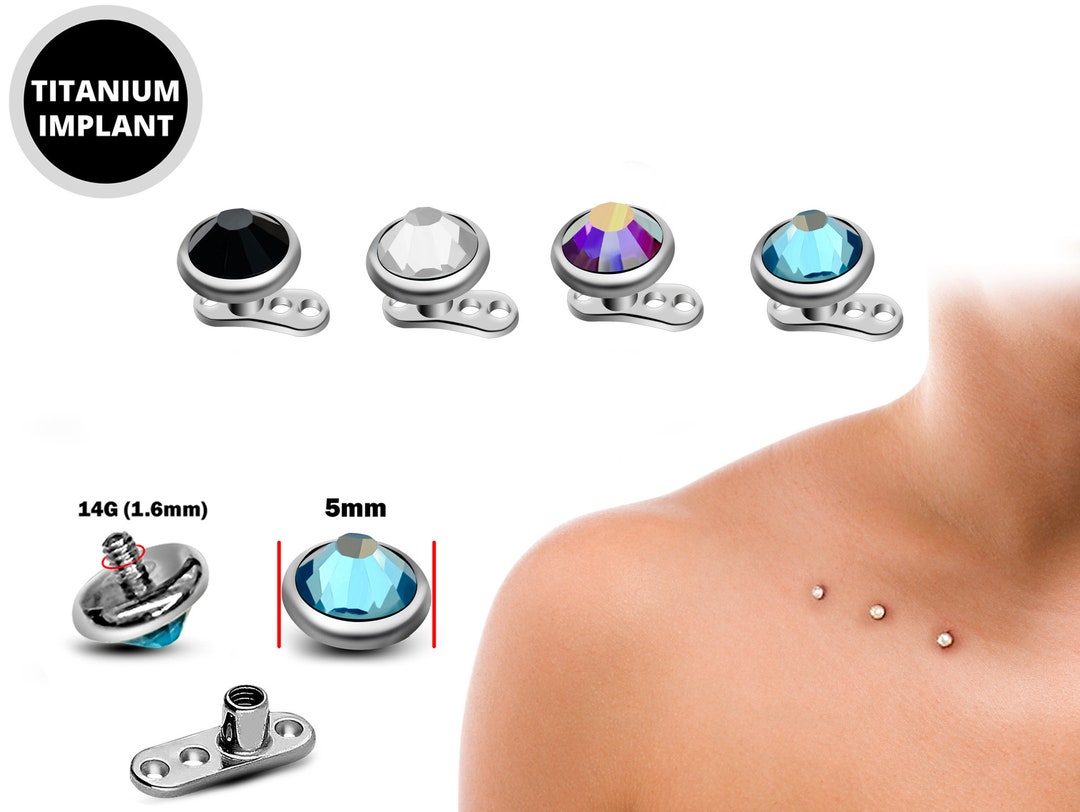
What are Microdermal Piercings?
Definition
Microdermal piercings, also known as dermal piercings or single-point piercings, are a type of body modification that involves inserting a small piece of jewelry into the skin. Unlike traditional piercings that go through a specific area of the body, microdermal piercings are anchored into the dermis layer of the skin, giving them a unique and eye-catching appearance.
Procedure
The procedure for getting a Dermal anchoring piercing involves creating a small pocket in the skin, where the jewelry will be inserted. This is done using a dermal punch or needle, depending on the preference of the professional piercer. After the pocket is created, the jewelry is carefully inserted and secured, leaving only a small visible part above the surface of the skin.

Types of Microdermal Piercings
Microdermal piercings can be done on various parts of the body, offering endless possibilities for personalized style and expression. Some common types of microdermal piercings include:
- Facial Microdermals: These are placed on the face, including the forehead, cheeks, and chin.
- Neck Microdermals: Placed on the neck, these piercings can be positioned in different patterns or as a single statement piece.
- Chest Microdermals: Positioned on the chest area, these piercings can create a unique and stunning aesthetic.
- Hand and Finger Microdermals: These piercings are placed on the hands and fingers, allowing for intricate and delicate designs.
- Back Microdermals: Placed on the back, these piercings can be arranged in patterns or as singular pieces of jewelry.
- Foot and Leg Microdermals: Positioned on the feet or legs, these piercings can add a touch of elegance or playfulness to your style.
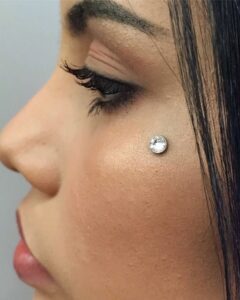
Benefits of Microdermal Piercings
Versatility
One of the major benefits of microdermal piercings is their versatility. Unlike traditional piercings that are limited to specific areas of the body, microdermals can be placed almost anywhere. This allows you the freedom to create unique and personalized body art that reflects your individual style and personality. Whether you want a single statement piece or a collection of microdermals to form a larger design, the possibilities are endless.
Unique Style
Dermal anchoring piercings offer a distinctive and eye-catching style that sets them apart from traditional piercings. With the jewelry anchored into the dermis layer of the skin, the visible part sits flush against the surface and creates a floating effect. This unique placement gives microdermals a three-dimensional look, adding an element of depth and intrigue to your body art.

Hypoallergenic Options
For individuals with sensitive skin or allergies, microdermal piercings offer hypoallergenic options. The materials used for microdermal jewelry, such as titanium or medical-grade stainless steel, are less likely to cause irritation or allergic reactions. This makes microdermal piercings a suitable choice for those who may have experienced issues with other types of piercings.
Lower Risk of Rejection
Rejection, which occurs when the body pushes the piercing out, is a concern with any type of body piercing. However, microdermal piercings have a lower risk of rejection compared to some other piercings. This is due to the unique anchor design of microdermals, which allows for better integration into the surrounding tissue. With proper care and maintenance, microdermals have a higher chance of staying in place and reducing the risk of rejection.
Easy Maintenance
Another advantage of Dermal anchoring piercings is the ease of maintenance. Unlike traditional piercings that require ongoing cleaning and rotating of the jewelry, microdermals only require minimal care. Regular cleaning with a saline solution or mild soap is typically all that is needed to keep the piercing clean and healthy. This makes microdermal piercings a convenient option for those who lead busy lifestyles.
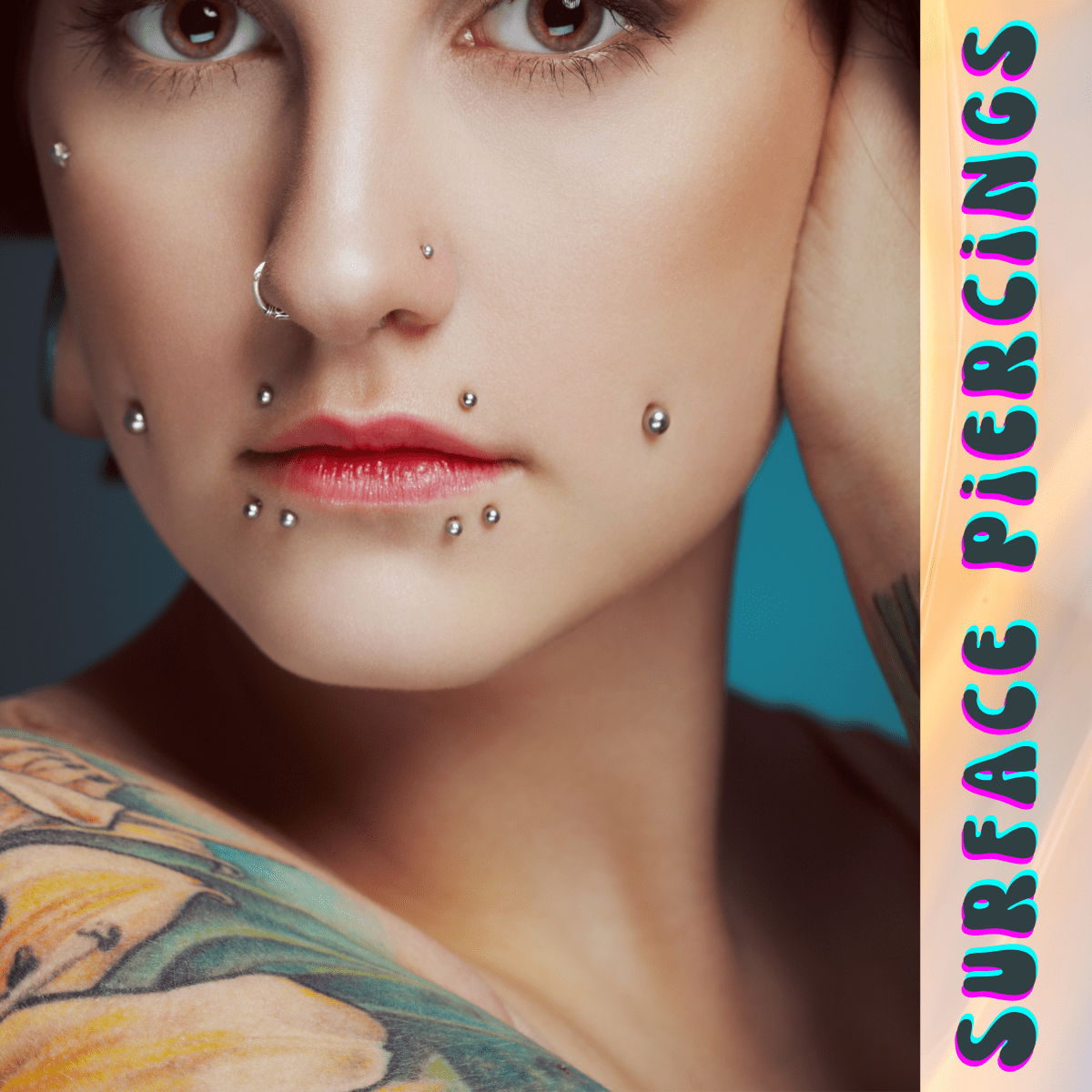
Choosing the Right Jewelry
Material Options
Choosing the right jewelry for your microdermal piercing is crucial to ensuring optimal comfort and safety. There are several material options available, each with its own unique characteristics. Some popular material options for microdermal piercings include:
- Titanium: Known for its hypoallergenic properties, titanium is a common choice for microdermal jewelry. It is lightweight, durable, and resistant to corrosion, making it an excellent option for those with sensitive skin or allergies.
- Medical-Grade Stainless Steel: Another popular material for microdermal jewelry is medical-grade stainless steel. It is durable, resistant to tarnish, and widely available. However, individuals with nickel allergies should opt for other materials, as stainless steel may contain traces of nickel.
- Gold: For a touch of luxury, gold microdermal jewelry is a popular choice. Gold is available in a variety of colors, including yellow, white, and rose gold, allowing you to customize your style. It is important to ensure that the gold used is of high quality, such as 14 or 18 karat, to minimize the risk of irritation or allergic reactions.
Gemstone Choices
Gemstones are a great way to add a touch of sparkle and personalization to your microdermal piercing. When choosing gemstones, it is important to consider the size, color, and quality. Some common gemstone choices for microdermal piercings include:
- Cubic Zirconia: A popular alternative to diamonds, cubic zirconia (CZ) offers brilliant sparkle and clarity at a more affordable price point. CZ comes in a variety of colors, allowing you to match your microdermal jewelry to your personal style.
- Opal: Opals are known for their iridescent play of colors, making them a striking choice for microdermal piercings. They come in various shades, from fiery red to vibrant blue, allowing for endless possibilities.
- Swarovski Crystals: Swarovski crystals are renowned for their exceptional clarity and brilliance. With a vast array of colors to choose from, Swarovski crystals can add a touch of glamour and elegance to your microdermal piercing.
Size and Design Considerations
When choosing the size and design of your microdermal jewelry, it is important to consider both aesthetic and practical factors. The size of the base, which sits beneath the skin, should be proportionate to the location of the piercing to ensure proper anchoring. The visible part of the jewelry should be in a size and design that complements your individual style and enhances the overall look of the piercing. Consulting with a professional piercer can help you determine the most suitable size and design for your microdermal piercing.
Finding a Professional Piercer
Research and Recommendations
Finding a reputable and experienced professional piercer is essential for a safe and successful microdermal piercing. Start by conducting thorough research online and reading reviews from previous clients. Seek recommendations from friends or acquaintances who have had positive experiences with their own microdermal piercings. It is crucial to choose a piercer who has a good reputation and demonstrated expertise in microdermal piercings.
Reviewing Their Portfolio
When considering a professional piercer, it is essential to review their portfolio or gallery of previous work. This will give you an idea of their skill level, style, and attention to detail. Look for piercers who have experience with microdermal piercings and a diverse range of successful results. Pay attention to the placement, aesthetics, and overall quality of the piercings showcased in their portfolio.
Consultation and Communication
Booking a consultation with a professional piercer is an important step in the process. During the consultation, you can discuss your ideas, preferences, and any concerns or questions you may have. A skilled piercer will listen to your needs, provide guidance, and offer their professional insights. Effective communication with your piercer is crucial for ensuring that you are both on the same page regarding your desired outcome.
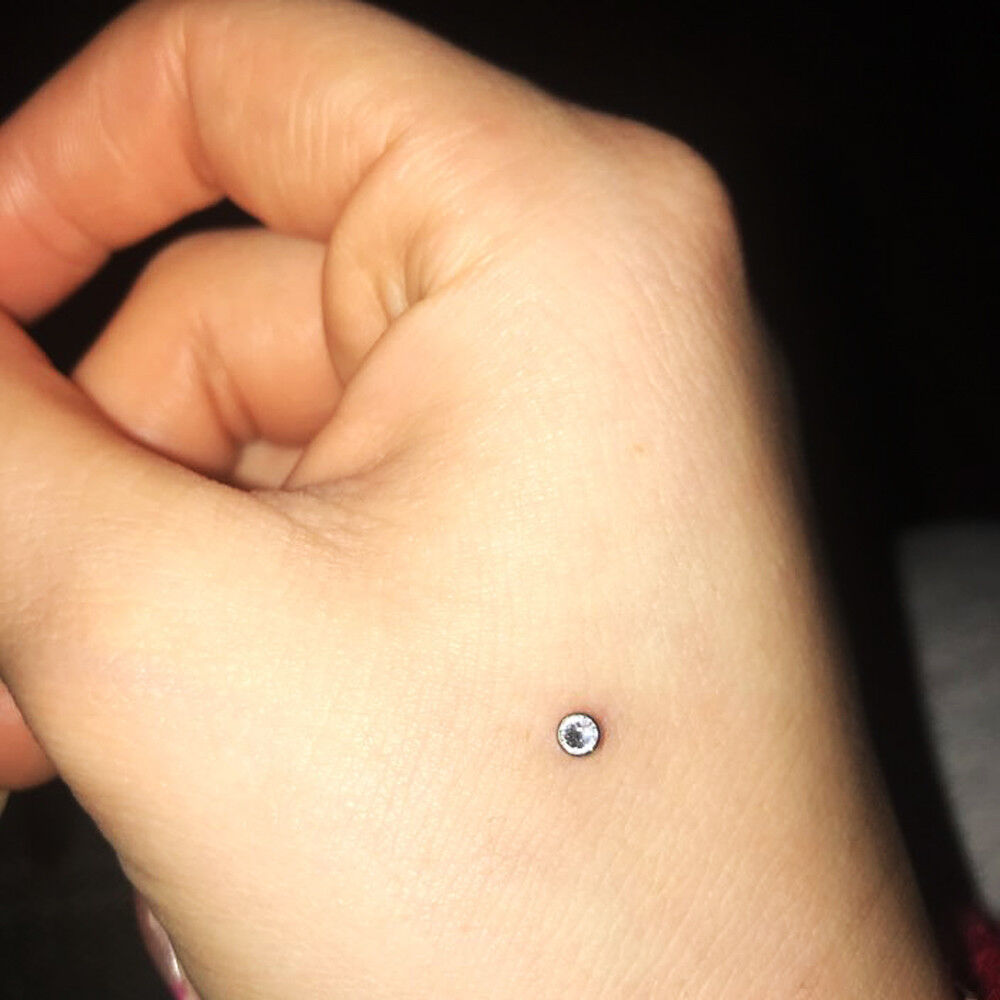
The Procedure: What to Expect
Preparation
Before the procedure begins, your piercer will prepare the area to be pierced. This includes cleaning the skin thoroughly to minimize the risk of infection. They may also mark the exact placement of the piercing to ensure accuracy and symmetry.
Sterilization
Sterilization is a crucial aspect of any piercing procedure. Your piercer should use sterile equipment and jewelry to minimize the risk of infection. They should also wear gloves throughout the entire process to maintain hygiene standards.
Anesthesia Options
The use of anesthesia during a microdermal piercing procedure may vary depending on personal preferences and the piercer’s practices. Some individuals may opt for a local anesthetic to numb the area, while others may choose to proceed without anesthesia. Discuss your options and preferences with your piercer during the consultation to ensure a comfortable experience.
Placement and Technique
Once the area is prepared and anesthesia is administered (if desired), your piercer will begin the piercing process. Using a dermal punch or needle, they will create a small pocket in the skin where the jewelry will be inserted. The jewelry is then carefully placed, ensuring proper alignment and a secure anchor beneath the skin. The procedure may take a few minutes to complete, depending on the number and complexity of the microdermal piercings.
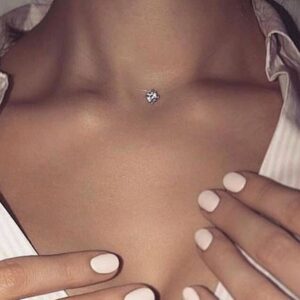
Healing Process
The healing process for microdermal piercings can vary from person to person and may take several weeks to months. During this time, it is important to follow proper aftercare guidelines to promote healing and minimize the risk of complications. Your piercer will provide you with detailed instructions on how to care for your microdermal piercings during the healing process.
Aftercare and Healing
Cleaning and Disinfection
Proper cleaning and disinfection are crucial for the healing of microdermal piercings. Your piercer will provide instructions on the appropriate cleaning solution to use, such as a saline solution or mild soap. It is important to clean the area gently and avoid using harsh or alcohol-based products that can irritate the piercing.
Avoiding Irritants
During the healing process, it is important to avoid irritants that can interfere with the healing of your microdermal piercings. These can include excessive touching, exposure to dirty or contaminated water, and applying beauty products or lotions directly on the piercing. Keeping the area clean, dry, and protected from potential irritants will help promote proper healing.
Managing Discomfort
Some discomfort, swelling, or tenderness may be experienced after getting a microdermal piercing, especially during the initial healing period. Over-the-counter pain relievers or the use of ice packs can help manage any discomfort. If you experience severe pain, excessive swelling, or any signs of infection, it is important to consult your piercer or a healthcare professional.
Monitoring for Infection
Monitoring the healing site for signs of infection is essential for maintaining the health of your microdermal piercings. Signs of infection can include redness, excessive swelling, pus or discharge, and increased pain or tenderness. If you notice any of these symptoms, it is crucial to seek medical attention promptly to prevent the infection from worsening.
Follow-up Visits
Your piercer may schedule follow-up visits to monitor the healing process and provide any necessary adjustments or advice. These visits are an opportunity to address any concerns, ask questions, and ensure that your microdermal piercings are healing properly. Attending these follow-up visits is important for the long-term health and maintenance of your piercings.
Potential Risks and Complications
Rejection
While microdermal piercings have a lower risk of rejection compared to some other piercings, there is still a possibility. Rejection occurs when the body perceives the piercing as a foreign object and pushes it out. Signs of rejection include increased movement of the jewelry, redness, and thinning of the tissue surrounding the piercing. Promptly seeking professional advice if you suspect rejection is crucial to prevent complications.
Migration
Migration refers to a gradual movement of the microdermal piercing from its original placement. This can be caused by factors such as improper jewelry size, trauma, or the body’s natural response to the piercing. Regularly monitoring your microdermal piercings and seeking professional advice if you notice any migration is important to prevent further complications.
Infection
While proper aftercare significantly reduces the risk of infection, it is still possible for microdermal piercings to become infected. Signs of infection include redness, swelling, discharge, and increased pain. If you suspect an infection, it is important to seek medical attention promptly to prevent further complications.
Scarring
Scarring is a potential risk with any type of piercing. However, the risk of scarring with microdermal piercings is generally lower compared to some other piercings. Following proper aftercare guidelines, avoiding trauma to the piercing, and practicing good hygiene can help minimize the risk of scarring.
Allergic Reactions
While microdermal piercings offer hypoallergenic options, there is still a risk of allergic reactions to certain materials, especially in individuals with known allergies. Pay close attention to how your body reacts to the jewelry and seek professional advice if you experience any signs of an allergic reaction, such as itching, redness, or swelling.
Removal of Microdermal Piercings
Professional Removal
If you decide to remove your microdermal piercings, it is recommended to seek professional removal. Professional removal ensures a safe and controlled process, minimizing the risk of complications. Your piercer will use specialized tools and techniques to carefully remove the microdermal jewelry, taking into consideration the positioning and condition of your piercings.
Home Removal
While it is generally recommended to seek professional removal, some individuals may choose to remove their microdermal piercings at home. If you decide to take this route, it is crucial to proceed with caution and follow proper sterilization protocols. Using clean tools and carefully following instructions can help minimize the risk of injury or infection during the removal process.
Aftercare for Removal
Proper aftercare for the removal of microdermal piercings is essential for proper healing. This includes keeping the area clean, dry, and protected from potential irritants. Your piercer or a healthcare professional can provide specific aftercare instructions based on your individual situation.
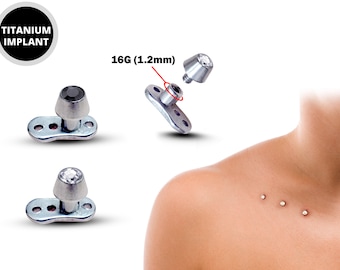
Celebrity Inspiration for Microdermal Piercings
Rihanna
Rihanna is known for her bold and eclectic style, and her microdermal piercings are no exception. She has been seen sporting various microdermal piercings on different parts of her body, including her chest and face. Rihanna’s fearless approach to fashion has made her a trendsetter in the world of microdermal piercings.
Cara Delevingne
Supermodel and actress Cara Delevingne is another celebrity who has embraced microdermal piercings. She has been seen with multiple microdermals placed in unique patterns on her chest, creating a stunning and edgy look. Cara’s fearless experimentation with different piercings has made her a style icon for those seeking to make a statement with their body art.
Zayn Malik
Former One Direction member turned solo artist, Zayn Malik, has also been spotted with microdermal piercings. Zayn’s microdermal piercings, strategically placed on his chest, add an element of individuality to his already distinctive style. His choice to incorporate microdermals into his look showcases their versatility and ability to enhance personal style.
Kehlani
Singer-songwriter Kehlani is known for her captivating vocals and unique style. She has embraced microdermal piercings as part of her overall aesthetic. By placing microdermals on her chest and neck, Kehlani adds a touch of unconventional beauty to her already impressive collection of body art.
Jaden Smith
Actor and musician Jaden Smith is no stranger to experimenting with his appearance. He has been seen with multiple microdermal piercings placed on his face, creating an avant-garde and cutting-edge look. Jaden’s fearless approach to fashion and style has made him a source of inspiration for those looking to explore the world of microdermal piercings.
FAQs about Microdermal Piercings
Do microdermal piercings hurt?
The level of pain associated with microdermal piercings can vary from person to person. However, many individuals report that the pain is relatively mild and comparable to getting a traditional piercing. With the use of local anesthesia, the pain can be further minimized during the procedure.
How long do they take to heal?
The healing time for microdermal piercings can vary depending on the individual, the location of the piercing, and how well they are cared for during the healing process. On average, microdermal piercings can take anywhere from several weeks to several months to fully heal.
Can they be done on any part of the body?
Microdermal piercings can be done on various parts of the body, offering a wide range of possibilities for customization and expression. However, it is important to consult with a professional piercer to determine the suitability of the chosen location and to ensure proper placement and anchoring.
What is the cost of microdermal piercings?
The cost of microdermal piercings can vary depending on various factors, including the location, the complexity of the piercing, and the experience of the piercer. Generally, microdermal piercings can range from $50 to $150 or more per piercing.
Are there any age restrictions?
Age restrictions for microdermal piercings may vary depending on local regulations and the policies of individual piercing studios. It is important to consult with a professional piercer or the studio directly to determine if there are any age restrictions in place. In some cases, parental consent may be required for individuals under a certain age.
In conclusion, microdermal piercings offer a unique and versatile way to express your individual style and personality. With their eye-catching appearance and endless customization possibilities, microdermals have become a popular choice for those looking to make a statement with their body art. From the array of material and gemstone options to the considerations for choosing the right jewelry and finding a professional piercer, there are many factors to keep in mind when exploring microdermal piercings. By following proper aftercare, monitoring for potential risks and complications, and seeking professional advice when needed, you can enjoy the beauty and impact of microdermal piercings while ensuring the health and longevity of your body art.

